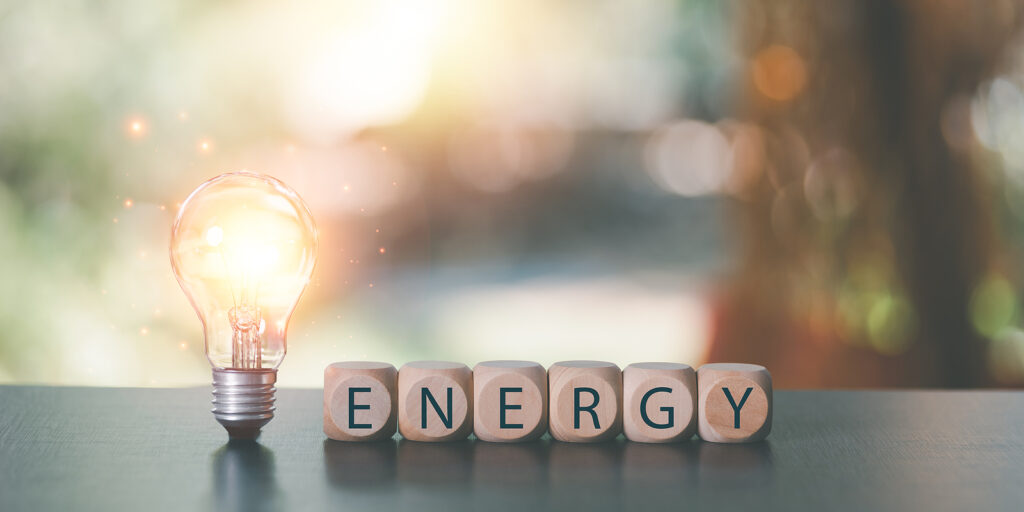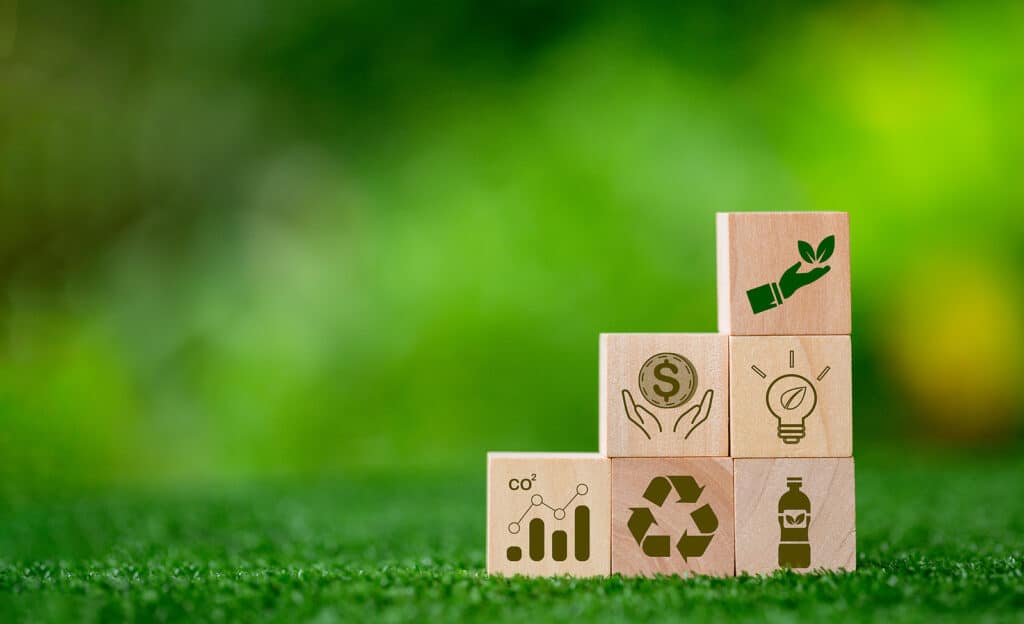Energy Efficiency on Climate Change
The issue of energy efficiency on climate change is one of the biggest challenges that our planet is facing today. The Earth's temperature is rising at an alarming rate, which is causing several devastating effects such as more frequent and intense natural disasters, sea level rise, and extinction of several species. One of the biggest contributors to climate change is the use of fossil fuels, which are responsible for emitting greenhouse gases that trap heat in the Earth's atmosphere. However, there is a solution that can significantly mitigate the effects of climate change: energy efficiency.
Energy efficiency refers to using less energy to provide the same level of service, such as heating or cooling a building, lighting a room, or running an appliance. By using energy-efficient products and implementing energy-efficient practices, we can significantly reduce the amount of energy we consume, which in turn reduces the number of greenhouse gases that are emitted into the atmosphere. In this article, we will explore the impact of energy efficiency on climate change and discuss what you can do to make a difference.
Understanding Climate Change and its Drivers
Climate change is not just a single problem with one identifiable cause. It is, instead, a highly intricate and multifaceted issue that involves varying degrees of changes in a multitude of environmental elements. These elements include long-term shifts in average temperature, irregular precipitation patterns, and considerable fluctuations in general atmospheric conditions that persist over an extensive timeframe.
The main culprits of climate change are predominantly human activities which excessively release harmful greenhouse gases (GHGs) into the Earth's atmosphere. These gases have the capability to trap solar heat, thereby creating a ‘greenhouse effect' which is leading to an alarming uptick in the Earth's overall temperature.
The Impact of Energy Efficiency on Climate Change
The concept of energy efficiency emerges as a pivotal player in the battle against the daunting implications of climate change. It encompasses methods and technologies that optimise the use of energy, thereby minimising wastage and contributing to a lower carbon footprint.
According to an extensive study by the International Energy Agency (IEA), a globally recognised autonomous agency that guides energy policies, the integration of energy efficiency measures could substantially decrease global CO2 emissions. The agency's research indicates a potential reduction of up to a remarkable 40% by the year 2040, a testament to the significant role that energy efficiency plays in curbing harmful emissions.
The IEA not only underscores the importance of energy efficiency in managing global warming but also goes a step further to assign it as the single most influential factor in achieving worldwide climate goals. These goals, often formulated with the intent of limiting the average global temperature increase, are crucial in averting the most catastrophic impacts of climate change.

Why is energy efficiency important?
Energy efficiency is of paramount importance due to several compelling reasons that impact both the environment and society at large:
Mitigating Climate Change
Improving energy efficiency is a potent tool in combating climate change. By reducing energy consumption and waste, we can lower greenhouse gas emissions, which are a major driver of global warming and its associated adverse impacts, such as rising sea levels, extreme weather events, and disruptions to ecosystems.
Reducing Greenhouse Gas Emissions
Energy production is a significant source of greenhouse gas emissions, particularly when derived from fossil fuels like coal, oil, and natural gas. Enhancing energy efficiency helps cut down the amount of energy needed to achieve the same output, leading to reduced emissions and less strain on the environment.
Conserving Natural Resources
Energy efficiency helps in preserving valuable natural resources like coal, oil, and natural gas, which are finite and non-renewable. By using energy more efficiently, we can extend the lifespan of these resources and reduce the need for their extraction, mitigating the associated environmental impacts.
Lowering Energy Costs
Energy efficiency measures translate into cost savings for individuals, businesses, and governments. Reduced energy consumption means lower utility bills, making it more affordable for households and companies to operate. For countries heavily reliant on imported energy, energy efficiency can also enhance energy security and reduce their vulnerability to fluctuations in global energy prices.
Boosting Economic Growth and Competitiveness
Energy-efficient technologies and practices drive innovation and can create new industries and job opportunities. Companies that invest in energy efficiency can improve their bottom line, enhance their competitiveness, and attract environmentally conscious consumers.
Enhancing Energy Independence
Countries that prioritize energy efficiency can reduce their dependence on foreign energy sources, enhancing their energy independence and geopolitical stability. By diversifying energy sources and implementing efficient practices, nations can build a more resilient energy infrastructure.
Improving Air Quality and Public Health
Many traditional energy sources, such as coal-fired power plants, emit harmful pollutants, contributing to air pollution and public health issues. Energy efficiency reduces the need for such polluting sources, leading to improved air quality and a healthier population.
Driving Technological Advancements
The pursuit of energy efficiency stimulates research and development in clean and renewable energy technologies, smart grid systems, and energy storage solutions. This fosters technological advancements that have far-reaching positive effects beyond the energy sector.
Meeting Sustainable Development Goals
Improving energy efficiency aligns with various United Nations Sustainable Development Goals (SDGs), including affordable and clean energy (SDG 7), climate action (SDG 13), and responsible consumption and production (SDG 12). It reinforces a holistic approach to sustainable development, benefiting both current and future generations.
What is energy efficiency in buildings?
Energy efficiency in buildings refers to the implementation of various strategies, technologies, and practices aimed at reducing energy consumption and waste while maintaining or enhancing the desired level of comfort, functionality, and productivity within the built environment.
Key aspects of energy efficiency in buildings include:
- Building Envelope: Improving the building envelope, which includes walls, roofs, windows, and insulation, to minimize heat transfer between the interior and exterior. A well-insulated and properly sealed envelope reduces the need for heating and cooling, thereby optimizing energy usage.
- Lighting: Utilizing energy-efficient lighting solutions, such as LED (Light Emitting Diode) bulbs, to replace traditional incandescent or fluorescent lights. Efficient lighting not only reduces electricity consumption but also extends the lifespan of lighting fixtures.
- HVAC Systems: Employing energy-efficient heating, ventilation, and air conditioning (HVAC) systems. This involves using advanced technologies, regular maintenance, and zoning strategies to ensure optimal temperature control while minimizing energy waste.
- Appliances and Equipment: Integrating energy-efficient appliances and equipment, including refrigerators, computers, printers, and office equipment. Energy Star-rated appliances and devices are designed to consume less energy, resulting in reduced energy bills.
- Renewable Energy Integration: Incorporating renewable energy sources, such as solar panels or wind turbines, to generate on-site clean energy, thereby offsetting the building's electricity demand from conventional sources.
The Benefits of Energy Efficiency on Climate Change
Reduced Greenhouse Gas Emissions: One of the most crucial benefits of energy-efficiency is the substantial reduction in greenhouse gas emissions. By using energy more efficiently, we decrease the need for fossil fuel combustion, which is a primary source of carbon dioxide (CO2) and other greenhouse gases in the atmosphere. Lower emissions help to limit the warming of the planet and mitigate the adverse effects of climate change.
Slowing Global Warming
Energy efficiency measures directly contribute to slowing down global warming. By curbing the release of greenhouse gases into the atmosphere, we reduce the heat-trapping effect, which helps maintain a more stable and less extreme climate.
Enhanced Climate Resilience
As the world faces the impacts of climate change, building energy-efficient infrastructure and adopting efficient practices strengthen the resilience of communities. Energy-efficient buildings, for example, require less energy for cooling and heating, making them more adaptable to changing weather patterns.
Lowered Energy Demand
Energy efficiency reduces overall energy demand, which, in turn, decreases the need for new power plants and reduces the pressure to exploit additional fossil fuel reserves. This shift towards lower energy consumption helps in preserving natural resources and ecosystems.
Air Quality Improvement
Energy efficiency measures can lead to improved air quality by reducing emissions of harmful pollutants, such as sulfur dioxide (SO2), nitrogen oxides (NOx), and particulate matter. Cleaner air benefits public health and reduces the environmental impact of air pollution.
Increased Energy Security
Energy efficiency lessens the dependence on imported energy sources, thereby enhancing energy security. Countries can rely more on domestic energy production or renewable sources, which are less vulnerable to geopolitical fluctuations and price shocks.
Sustainable Development Goals
Energy efficiency aligns with multiple Sustainable Development Goals (SDGs) set by the United Nations, including affordable and clean energy (SDG 7), climate action (SDG 13), and sustainable cities and communities (SDG 11). It plays a crucial role in achieving a balanced and sustainable future for humanity.
Economic Advantages
Energy efficiency measures can lead to cost savings for individuals, businesses, and governments. Lower energy bills for households and industries translate into increased disposable income, improved competitiveness, and more funds available for investments in other areas of the economy.
Facilitating Renewable Energy Integration
Energy efficiency creates a more favorable environment for the integration of renewable energy sources. By reducing overall energy demand, energy-efficient measures allow a greater portion of the energy mix to be sourced from clean and renewable sources like solar, wind, and hydroelectric power.
Reducing Energy Waste
Energy efficiency serves as a powerful tool not just in reducing energy consumption, but also in combatting energy waste, a pressing concern that arises when we use more energy than necessary to achieve the same level of service. This issue not only depletes valuable resources but also contributes to avoidable greenhouse gas emissions, exacerbating the global challenge of climate change.
To illustrate, consider the common scenario of leaving a computer on overnight. This seemingly innocent act leads to unnecessary energy consumption, resulting in energy waste and an unwarranted release of greenhouse gases into the atmosphere. However, by incorporating energy-efficient habits, such as diligently turning off the computer when not in use, you can make a meaningful impact in minimizing energy waste and consequently mitigating harmful greenhouse gas emissions. These small yet crucial steps align with the broader objective of fostering a sustainable future for our planet.
In essence, embracing energy efficiency practices empowers individuals to play an active role in conserving energy resources, curbing wastefulness, and collectively addressing the environmental challenges we face today. By collectively adopting such measures, we move closer to building a more sustainable and resilient world for generations to come.
Reducing Energy Costs
Beyond its environmental impact, energy efficiency boasts substantial economic benefits, yielding considerable savings on energy costs. Through the reduction of energy consumption and waste, individuals and households can witness a notable decrease in their energy bills, leading to more financial resources available for other essential expenses.
To illustrate, consider the installation of energy-efficient windows in your home. By opting for these advanced windows, you can significantly lower your heating and cooling expenses. The resulting savings can be reallocated to important financial endeavors, such as investing in education, ensuring better healthcare coverage, or bolstering retirement savings. This demonstrates how energy efficiency acts as a powerful tool for improving financial stability and promoting overall well-being.

Strategies for Energy Efficiency
Enhancing energy efficiency is a multifaceted endeavor that requires collective action from governments, businesses, and individuals. A plethora of strategies exists to address this crucial goal, each playing a pivotal role in driving positive change on both environmental and economic fronts.
At the governmental level, policymakers hold the key to shaping a more energy-efficient future. They can institute stringent standards and codes for energy efficiency across various industries and sectors, effectively mandating the adoption of eco-conscious practices. Furthermore, providing incentives for the integration of energy-efficient technologies can stimulate innovation and encourage widespread adoption. Governments can also play a crucial role by investing in research and development initiatives, fostering the emergence of cutting-edge solutions that promote sustainability and resource optimization.
Businesses, as major energy consumers, have a profound responsibility to spearhead energy efficiency efforts. They can begin by upgrading their equipment to utilize the latest energy-efficient technologies, reducing energy wastage and optimizing overall performance. This approach not only reduces the company's carbon footprint but also engenders significant cost savings in the long run. Adopting sustainable business practices, such as harnessing renewable energy sources like solar or wind power, can further contribute to both environmental preservation and financial gains.
What You Can Do
Energy efficiency emerges as a pivotal solution in the fight against climate change, and there are various proactive steps you can take to make a significant difference in this crucial endeavor.
Embrace Energy-Efficient Products
A fundamental step towards improving energy efficiency examples lies in the use of energy-efficient products. These cutting-edge innovations, ranging from LED light bulbs to energy-efficient appliances and windows, consume significantly less energy while delivering the same level of service. By adopting these products, you can dramatically curtail your energy consumption and consequent greenhouse gas emissions, thereby contributing to a more sustainable future.
Adopt Energy-Efficient Practices
Complementing the use of energy-efficient products, implementing energy-conscious practices in your daily routine can yield substantial benefits. Simple habits like turning off lights when not in use, unplugging electronics when idle, leveraging natural light whenever possible, and employing a programmable thermostat for temperature regulation all contribute to reducing energy waste and lowering greenhouse gas emissions.
Invest in Renewable Energy
Renewable energy sources, such as solar and wind power, offer a clean and sustainable alternative to fossil fuels. By investing in these renewable options, you can actively reduce your dependence on conventional energy sources, thereby curbing greenhouse gas emissions and promoting a greener energy landscape. Consider options such as installing solar panels on your property, participating in community solar projects, or purchasing renewable energy credits to support the expansion of clean energy initiatives.
Advocate for Energy Efficiency Policies
Supporting and advocating for energy efficiency policies play a critical role in promoting a more sustainable future. Policies like building codes that mandate energy-efficient construction, tax incentives for energy-efficient products, and standards for energy-efficient appliances can have a profound impact on advancing energy efficiency on a broader scale. By actively voicing your support for such policies, you contribute to a policy landscape that prioritizes energy conservation and helps reduce greenhouse gas emissions on a larger societal level.
Conclusion
The impact of energy efficiency on climate change cannot be overstated. Energy efficiency is a crucial solution to mitigating the effects of climate change and reducing greenhouse gas emissions. By using energy-efficient products, implementing energy-efficient practices, investing in renewable energy, and supporting energy-efficiency policies, we can all make a difference in the fight against climate change.
As individuals, we may feel powerless to make a difference in the face of such a daunting challenge as climate change. However, by taking action to improve energy efficiency definition, we can all make a positive impact on the environment and help to mitigate the effects of climate change.
Sources:
https://www.energy.gov/energysaver/energy-efficiency
https://www.epa.gov/energy/energy-efficiency
https://www.thebalance.com/renewable-energy-sources-and-technologies-4151090
https://www.nrdc.org/stories/how-support-energy-efficiency-policies
https://www.ucsusa.org/resources/energy-efficiency-climate-change

